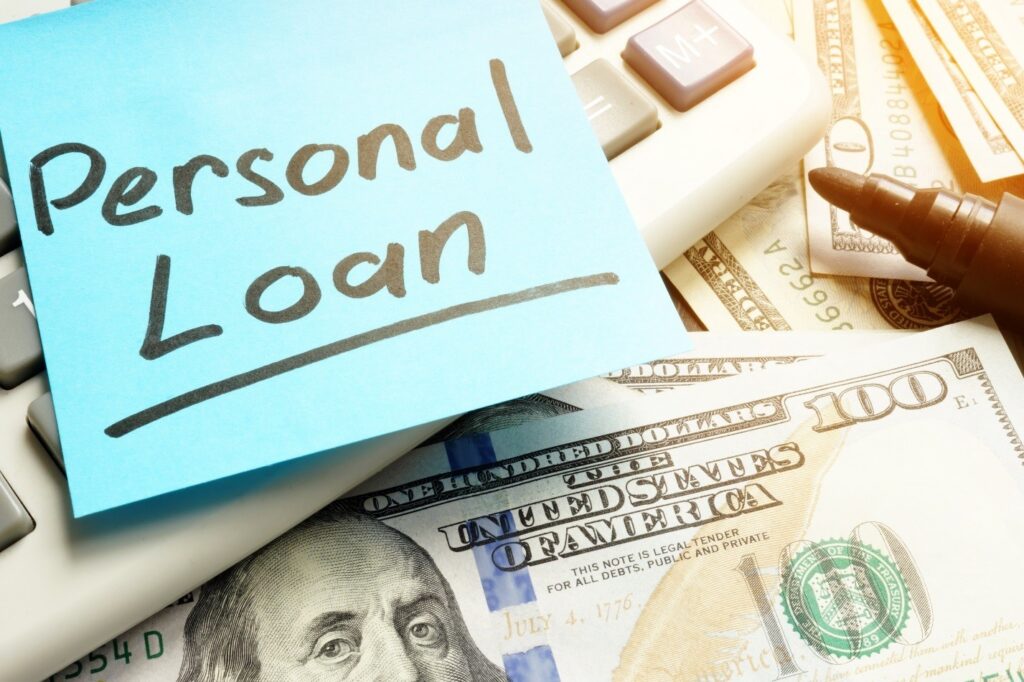Financial hardship can result from having too much debt in a number of ways. You might find it difficult to make ends meet or your credit might deteriorate, which would make it harder for you to be approved for further loans like mortgages or auto loans.
There are various steps you can take to swiftly reduce your debt and start down a sound financial path if you’re carrying a sizable amount of it.

How We Make Money
The businesses whose offers you see on this website pay us. Unless our mortgage, home equity, and other home lending products are specifically prohibited by law, this compensation may have an impact on how and where products appear on this website, including, for example, the order in which they may appear within the listing categories. However, this payment has no bearing on the content we post or the user reviews you see here. We don’t include the range of businesses or loan options that you might have.

Our goal at Bankrate is to assist you in making more informed financial decisions. Although we follow stringent guidelines, this post might mention goods from our partners. Heres an explanation for . Bankrate logo.
Bankrate was established in 1976 and has a long history of assisting consumers in making wise financial decisions. We’ve upheld this reputation for more than 40 years by assisting people in making sense of the financial decision-making process and providing them with confidence regarding their next course of action.
You can rely on Bankrate to prioritize your interests because we adhere to a rigorous editorial policy. All of the content we publish is objective, accurate, and reliable because it is written by highly qualified professionals and edited by subject matter experts.
Our banking reporters and editors concentrate on the topics that matter most to customers: the best banks, the most recent rates, various account kinds, money-saving advice, and more, so you can handle your money with confidence. Bankrate logo.
You can rely on Bankrate to prioritize your interests because we adhere to a rigorous editorial policy. Our team of distinguished editors and reporters produces truthful and precise content to assist you in making wise financial decisions.
We value your trust. Our goal is to give readers reliable, unbiased information, and we have established editorial standards to make sure that happens. Our reporters and editors carefully verify the accuracy of the editorial content they produce, making sure you’re reading true information. We keep our editorial staff and advertisers apart with a firewall. No direct payment from our advertisers is given to our editorial staff.
The editorial staff at Bankrate writes for YOU, the reader. Providing you with the best guidance possible to enable you to make wise personal finance decisions is our aim. We adhere to stringent policies to guarantee that advertisers have no influence over our editorial content. Advertisers don’t pay our editorial staff directly, and we carefully fact-check all of our content to guarantee accuracy. Thus, you can be sure that the information you’re reading, whether it’s an article or a review, is reliable and reputable. Bankrate logo.
How we make money
You have money questions. Bankrate has answers. For more than 40 years, our professionals have assisted you in managing your finances. We always work to give customers the professional guidance and resources they need to be successful on their financial journey.
Because Bankrate adheres to strict editorial standards, you can rely on our content to be truthful and accurate. Our team of distinguished editors and reporters produces truthful and precise content to assist you in making wise financial decisions. Our editorial team produces factual, unbiased content that is unaffected by our sponsors.
By outlining our revenue streams, we are open and honest about how we are able to provide you with high-quality material, affordable prices, and practical tools.
Bankrate. com is an independent, advertising-supported publisher and comparison service. We receive payment when you click on specific links that we post on our website or when sponsored goods and services are displayed on it. Therefore, this compensation may affect the placement, order, and style of products within listing categories, with the exception of our mortgage, home equity, and other home lending products, where legal prohibitions apply. The way and location of products on this website can also be affected by other variables, like our own unique website policies and whether or not they are available in your area or within your own credit score range. Although we make an effort to present a variety of offers, Bankrate does not contain details about all financial or credit products or services.
- Remaining deeply in debt can prevent you from taking advantage of opportunities such as home ownership or employment.
- Knowing the various debt management techniques can assist you in determining the most effective approach to pay off your debt.
- Make sure you understand the benefits and drawbacks of each debt repayment strategy so you can choose the one that works best for you.
Getting out of debt isn’t easy. There are moments when saving money for a rainy day and paying monthly bills require all of your strength. However, if you only pay your creditors the bare minimum, you run the risk of becoming deeply in debt, and it might take you months or even years to get out of it. However, there are many ways to get out of debt. You can pay off debt more quickly by employing a debt management plan like the snowball method, debt consolidation, or making use of financial windfalls.
6 ways to get out of debt
If you’re prepared to pay off debt, begin by completing the actions listed below.
Pay more than the minimum payment
Examine your spending plan to determine how much extra you can contribute to your debt. Making larger than minimum payments can help you pay off debt more quickly and save money on interest.
Suppose you have a credit card with a $15,000 balance, 17 percent annual percentage rate, and a $450 minimum payment. It will take nearly four years to pay off the remaining amount if you only make the minimum payment. You’ll pay about $5,500 in total interest.
You could pay off the debt in less than three years and only pay $4,100 in interest if you paid $550 a month, or $100 more than the minimum. To learn more, try using a credit card payoff calculator.
Why this works: Making larger payments than the minimum allows your credit card principal balance to drop more quickly.
How to begin: Arrange the additional payment in advance of the current billing cycle’s due date. Verify that the additional money you are paying goes toward the principal. It can also be added to the monthly minimum payment.
Try the debt snowball
Another debt reduction strategy you can try if you’re paying more than the minimum is the debt snowball method. With this debt repayment plan, you will pay the minimum amount due on all but the smallest debt, which you will pay as much as you are able to. You can swiftly pay off your smallest debt by “snowballing” payments toward it. Then, you can move on to the next smallest debt and make minimum payments on the remaining balances.
Assume you owe $10,000 in student loans, $1,000 on your auto loan, and $5,000 on your credit card. Since the auto loan has the lowest total balance, you should concentrate on paying it off first when using the debt snowball method.
By encouraging you to concentrate on one debt at a time rather than several, the debt snowball method can help you gain momentum and stay on course. The debt snowball method is something you should only rule out if you have a title loan or payday loan. These loans should be repaid as soon as possible because they typically have much higher interest rates, ranging from 300 to 400 percent APR on average.
Why this works: Using the debt snowball method will enable you to see progress quickly, which will inspire you to continue.
Starting point: Make a list of all of your outstanding debts and sort them by amount, starting with the lowest amount. Keep making the minimum payments on all of your bills, and apply any additional money to the loan with the lowest balance until it is settled in full. With the following-to-smallest debt on the list, repeat these steps.
You can save hundreds of dollars in interest and expedite debt repayment by refinancing your debt at a lower interest rate. Mortgages, auto loans, personal loans, and student loans can all be refinanced.
A debt consolidation loan, a personal loan that might have interest rates lower than your current debts, is one way to accomplish this. If you have credit card debt, you might also think about transferring the balance to a balance transfer card. These cards offer 0% APR for a predetermined period of time, typically six to eighteen months.
Why this works: By refinancing, you can get a fixed loan term, a lower interest rate, and a predictable monthly payment, which will help you finish the race sooner.
How to get started: Look into debt consolidation options and choose the best one. If you choose to take out a debt consolidation loan, find the best rate by getting preapproved. Make sure you have the funds available to pay off the balance in full before the promotional period expires if you decide to use a balance transfer card.
Commit windfalls to debt
A windfall is a substantial quantity of money that you didn’t anticipate receiving. This may come from a stimulus check or a tax refund, for example. Rather than putting a windfall in your bank account or treating yourself to something nice, use it to pay down your debts. You have the option to use the entire windfall for debt or to divide it equally between debt and enjoyable expenses like a fancy dinner or upcoming trip.
You can also use other unforeseen benefits, such as cash gifts, work bonuses, and inheritances, to pay off debts more quickly. Recall that every little bit counts toward your debt-reduction objectives.
Why this works: Making the most of financial windfalls encourages debt repayment by creating momentum.
Start by deciding how you’ll divide the money and quickly applying the selected amount to your debt balances to resist the urge to go overboard.
Settle for less than you owe
Additionally, you can negotiate a debt settlement over the phone with your creditors, typically for much less than you owe. Although you can handle this on your own, a number of outside businesses also provide debt settlement services for a charge.
While it may seem wise to pay less than you owe and pay off old debts, there are some risks involved, according to the Federal Trade Commission. To begin with, while you’re negotiating better terms, some debt settlement companies may ask you to stop making payments on your debts. This can have a negative effect on your credit score.
Why this works: You can move on knowing you owe those creditors nothing and will only have to pay a portion of what you owe.
Starting point: Make settlement offers to your creditors, and once they accept, get the details in writing. Or you can get the legwork done for you by hiring a trustworthy debt settlement business.
Re-examine your budget
Either increase your income or reduce your spending to pay off your debts more quickly. While taking on a side project or part-time job might not be possible, you can change your spending plan.
Begin by examining every item in your budget and ranking them according to importance. Assign needs and wants to each line item, emphasizing costs that can be cut or eliminated. Make the required changes to your spending plan, then utilize the extra cash to make larger monthly payments on your debts.
Why this works: By making temporary financial sacrifices, you can free up money to pay off your balances more quickly.
How to begin: Evaluate your budget to find areas where you can cut costs. Transfer these money to your spending plan’s “debt-payoff fund” and utilize it to make extra monthly debt payments.
What’s the average debt per person?
The average American has $21,800 in non-mortgage debt in 2023. This number includes credit card balances, auto loans, personal loans and student loans.
Here’s how it breaks down by generation:
| Age group | Average debt load |
|---|---|
| Gen Z (18-26) | $15,105 |
| Millennials (27-42) | $29,702 |
| Gen X (43-58) | $32,190 |
| Baby boomers (59-77) | $19,203 |
| Silent generation (78+) | $7,706 |
How debt can negatively impact your life
Debt can increase borrowing costs and make it harder to qualify for other loans. It can also prevent you from landing your dream job.
It is more difficult for borrowers with high debt-to-income (DTI) ratios to be approved for loan products. For instance, most lenders demand that, when it comes to future mortgage payments, your debt-to-income (DTI) ratio be 43 percent or less if you wish to purchase a home.
Assume you have $300 to pay off your student loans, $500 to pay off your car loan, and $200 to pay the minimum amount on your credit card. By dividing your current monthly debt payments by your monthly gross income, you can find your DTI ratio. Accordingly, your DTI is 26 if your gross monthly salary is $3,750. 67 percent. The highest mortgage payment you would be eligible for in this case is $612. 50. It might be nearly hard to find a house in that price range, depending on where you live.
It could be very challenging for you to qualify for a mortgage if your debt-to-income ratio is already higher than 43% without a mortgage payment. It can also be more difficult to save money for other goals, such as retirement or your child’s college education, if you have a lot of debt.
Thirty percent of your credit score is determined by credit utilization, which is the amount of your revolving account credit limit. If you struggle to pay more than the minimum each month and have large credit card balances, your credit score may suffer.
Regretfully, creditors and lenders view borrowers with lower credit scores as more dangerous. As a result, compared to people with good or excellent credit, you’ll probably pay more for debt products. Or you could be denied financing altogether.
When you apply, your employer might run a credit check if you are in the military, law enforcement, or finance sector. If you have excessive debt, you might not be accepted because you are statistically more likely to accept bribes when you are in a precarious financial situation.
It can be difficult to escape the bonds of debt servitude. However, by implementing these tips, you can begin taking action to reduce your debt and enhance your financial situation as a whole. Just make sure you comprehend the reasons behind your initial debt and make changes to your behavior to avoid going through the same cycle again after your balances are settled in full.





FAQ
Is there any way to get out of a loan?
Renew the terms of your loan. If you have a history of making your loan payments on time, they might be willing to assist you. The lender may provide options like a lower interest rate or longer payment terms, or they may offer a forbearance or short-term payment delay. They won’t forgive any principal or interest you owe.
Is it possible to cancel a loan?
In the event that the loan has been approved but not disbursed, cancellation is an option. However, you must act quickly because some lenders will pay out the loan as soon as the deal is finalized.
Can I get out of paying a personal loan?
If you default on a personal loan, you may face legal repercussions, account default, collection of the outstanding balance, and a substantial decline in your credit score. Here are some things to consider if you’re struggling financially and wondering how you’ll continue to make your personal loan payments.
Read More :
https://smallbusiness.chron.com/can-out-loan-agreement-1653.html
https://www.bankrate.com/personal-finance/debt/ways-to-get-out-of-debt/
